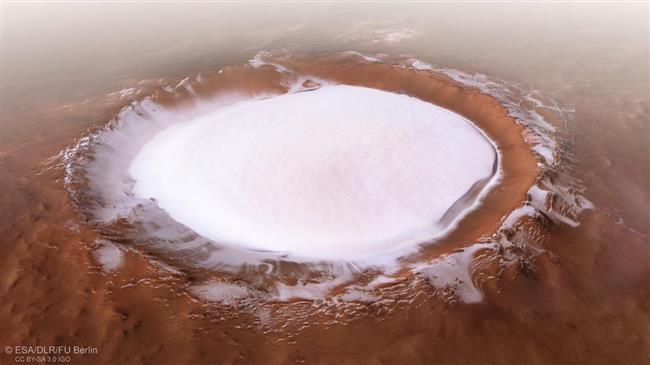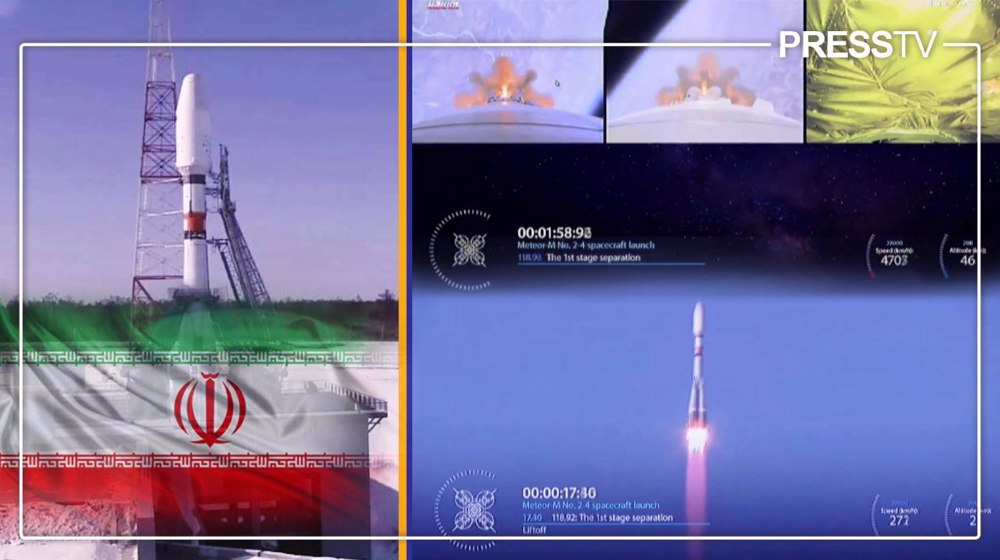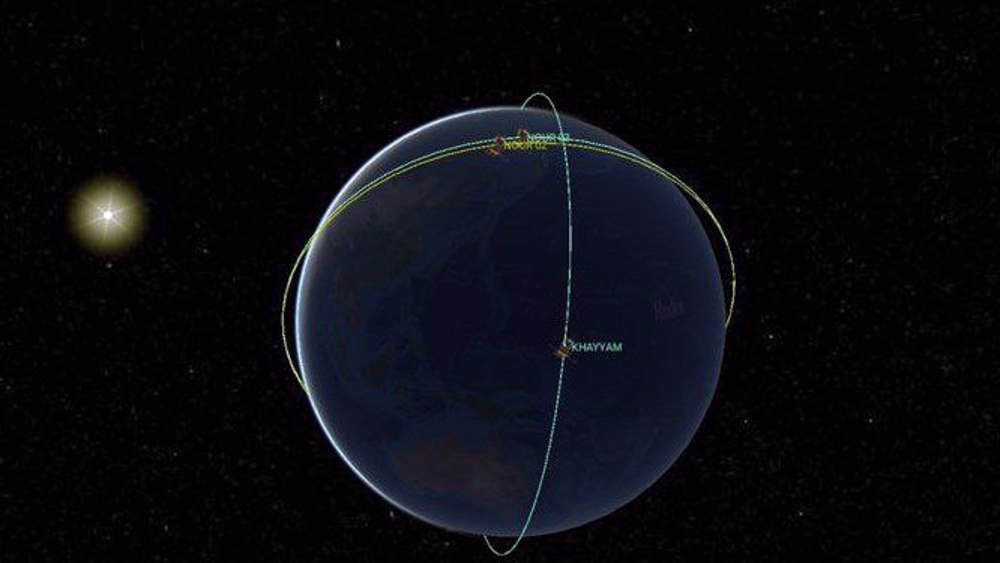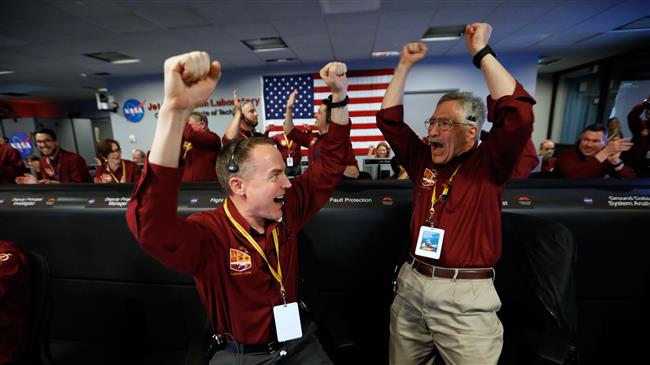Huge reservoir of water ice found in northern lowlands of Mars
Stunning images taken by the European Space Agency (ESA) show a massive ice-filled Martian crater on the cold and dry red planet, the closest candidate that is expected to somehow harbor life and become humans’ next destination for a rainy day.
The images, which have been taken by the European Space Agency’s Mars Express orbiter, shows the 82-kilometer-wide Korolev crater, located in northern lowlands of Mars, filled with permanent water ice as thick as 1.8 kilometers in deep places, ESA said in a statement.
“The very deepest parts of Korolev crater, those containing ice, act as a natural cold trap: the air moving over the deposit of ice cools down and sinks, creating a layer of cold air that sits directly above the ice itself,” it added.
The reservoir is speculated to contain some 2,200 cubic kilometers of water ice – same as the volume of Canada’s Great Bear Lake. This colossal amount of water ice could be important for the survival of future colonists, and might even help them to return back home, as water could be split into hydrogen and oxygen for rocket fuel.

The outstanding photographs, taken by the High Resolution Stereo Camera (HRSC), were created after it captured five different “strips” of the crater, each one coming from a different orbit as the Mars Express probe flew overhead. By combining the strips the HRSC managed to produce single images.
The HRSC is capable of picking out features 10 meters wide, or as small as 2 meters when used in super-resolution mode.
The crater, which depicts such a beautiful winter wonderland on Mars, is named after chief rocket engineer and spacecraft designer Sergey Korolev (1906-1966), dubbed the father of Soviet space technology. He was the head of iconic space exploration missions, including the Sputnik, Vostok, and Voskhod programs.
The European Space Agency’s Mars Express orbiter swung into orbit around Mars on Christmas Day 2003.
US secretly pressing countries into nixing Palestinian statehood: Cables
VIDEO | Israel impregnability perished
VIDEO | Top Iran official visits Syria to unite efforts in combating terrorism in region
VIDEO | Palestinians take to streets across West Bank to mark Prisoners Day
Israeli military’s new killing tactic: ‘Drones playing sounds of crying children’
‘Unsubstantiated’: Iran rejects Argentine court's blaming for AMIA bombing
West’s backing of Israel after Iran’s retaliation ‘reckless, irresponsible’: Legal analyst
Hamas: Iran’s attack ended Israel’s era of hit-and-run
















 This makes it easy to access the Press TV website
This makes it easy to access the Press TV website